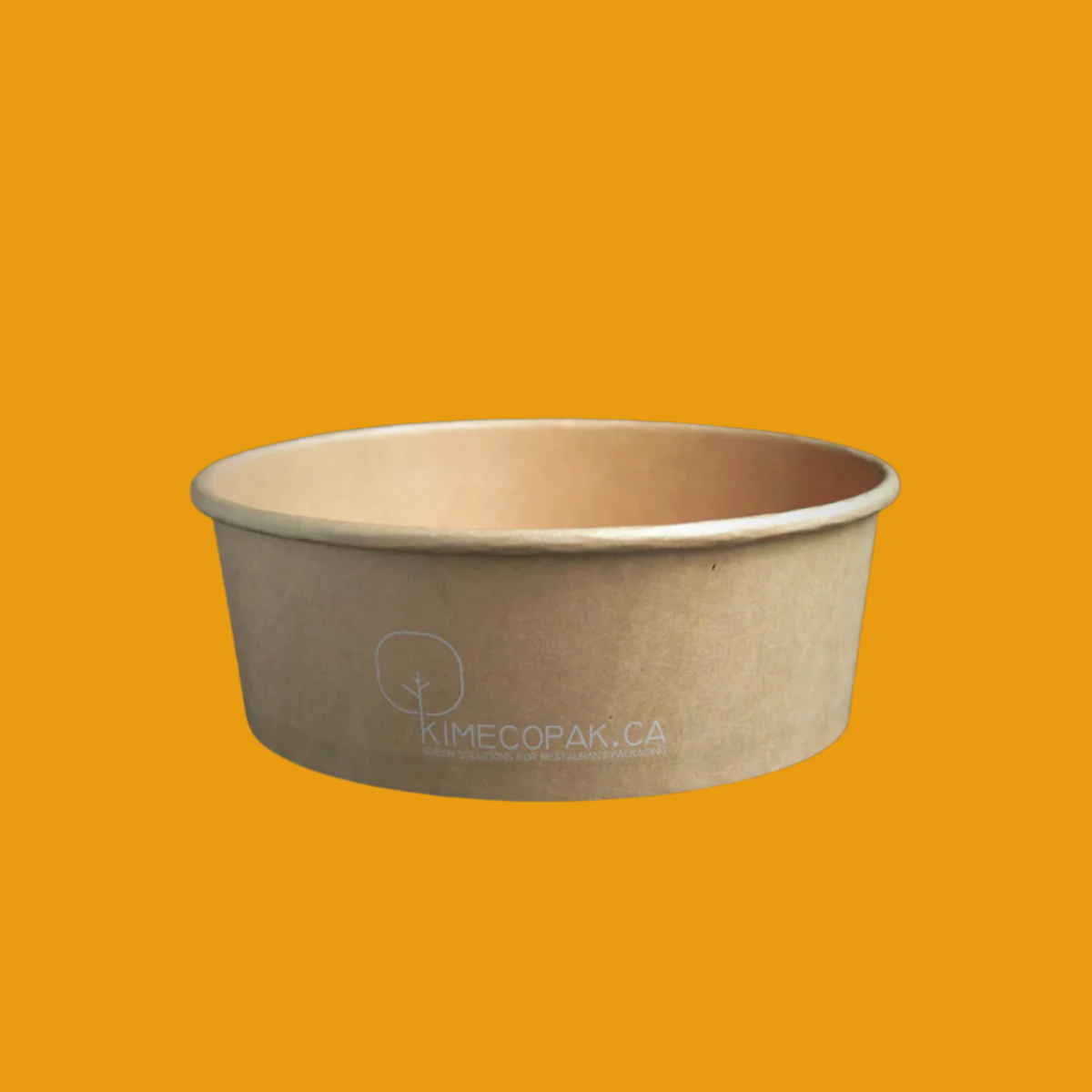Thinking about turning your passion for healthy food into a thriving business? Learning how to start a salad bar might be the fresh opportunity you're looking for. With the rising demand for quick, customizable, and nutritious meals, salad bars have become a popular go-to for health-conscious consumers. Whether you’re dreaming of a trendy grab-and-go concept or a cozy dine-in space, starting a salad bar allows you to offer vibrant, wholesome meals that cater to a wide variety of tastes and diets.
-
How to Open a Food Truck With No Experience
-
How To Open A Candy Store: A Step-by-Step Guide
- 12 Brand Designs Ideas for Food Business
1. How to Start a Salad Business: The Appeal of Starting a Salad Bar

Starting a salad bar can be an exciting and rewarding venture, especially in today’s health-conscious world. Many people are looking for quick, nutritious, and customizable meal options, which is where your salad bar can step in!
The growing demand for healthy and customizable food options is reshaping how we think about dining out. With more consumers focusing on their well-being, offering fresh, vibrant salads puts you in a favorable position in the food industry. This guide will walk you through the essential steps to successfully launch your salad bar, from market research to setting up shop and everything in between.
2. How to Open a Salad Bar: Laying the Foundation with Market Research and Planning
2.1. Understanding Your Target Market
Identifying your customer base is integral to your salad bar's success. Consider who is likely to eat at your establishment.
- Demographics and Preferences: Are you catering to busy professionals, health enthusiasts, families, or students? Each group has unique tastes and needs.
- Analyzing Local Demand for Salad Bars: Look for trends in your area that highlight a growing interest in salads or healthy eating options. Visiting local farmers' markets or wellness events can provide insight into your potential customer base.
2.2. Competitive Analysis
Before diving in, you should get to know the landscape of other salad bars and similar businesses in your area.
- Identifying Existing Salad Bars and Similar Businesses: Take a walk around your community or check online for similar establishments. What’s already available?
- Analyzing Their Strengths and Weaknesses: What do they do well? Are they missing something? This analysis can help you identify gaps that you can fill.
- Finding Your Unique Selling Proposition (USP): This is how you stand out. Whether it’s unique dressings, unusual toppings, or eco-friendly practices, highlight what makes your salad bar special!
2.3. Crafting a Comprehensive Business Plan
A detailed business plan can guide your decisions and attract investors.
- Executive Summary: Summarize what your salad bar will be all about.
- Company Description: Detail your business model – is it dine-in, takeaway, or both?
- Market Analysis: Include insights from your earlier research.
- Products and Services (Your Salad Bar Menu): Plan your menu offerings, considering various dietary preferences.
- Marketing and Sales Strategy: Think about how you will attract and retain customers.
- Management Team: Who will you work with? Outline their roles and experiences.
- Financial Projections: Draft expectations for revenue and expenses to ensure your salad bar's financial health.
3. The Essentials: Setting Up Your Salad Bar

3.1. Choosing the Right Location
Finding the perfect spot for your salad bar is crucial.
- Factors to Consider: Look for areas with high visibility and accessibility. Think about foot traffic and the demographics of nearby residents.
- Leasing or Buying Commercial Space: Depending on your budget, decide if leasing or purchasing a space aligns better with your long-term plans.
3.2. Obtaining Licenses and Permits
Before serving your delicious salads, ensure you’re compliant with local regulations.
- Researching Local and State Regulations: Every area has different requirements for food businesses. Familiarize yourself with these.
- Applying for Necessary Food Service Permits and Licenses: Ensure all paperwork is completed well ahead of your grand opening.
3.3. Investing in Essential Equipment
Quality equipment leads to better operation and customer satisfaction.
- Salad Bar Display Units: Invest in both refrigerated and non-refrigerated units to preserve the freshness of your ingredients.
- Prep Tables and Food Preparation Tools: Equip your staff with the right tools for efficiency and safety.
- Refrigeration and Storage Units: Store ingredients safely and maintain quality.
- Point of Sale (POS) System: A reliable POS system simplifies transactions and helps manage sales data.
- Seating and Tables for Customers: Create a welcoming environment that encourages customers to enjoy their meals comfortably.
Cost-Effectiveness of Paper Bowls in Bulk Purchasing
3.4. Sourcing High-Quality Ingredients
The heart of a salad bar lies in its ingredients.
- Establishing Relationships with Reliable Produce Suppliers: Try to find suppliers who share your commitment to quality.
- Considering Local and Seasonal Options: Highlighting local produce supports your community and ensures freshness.
- Ensuring Freshness and Quality Control: Set up procedures to regularly check your ingredients, keeping your offerings vibrant and tasty.
4. Creating Your Menu: Freshness and Variety

4.1. Designing an Appealing Salad Bar Selection
When it comes to building your salad bar, is truly the spice of life! An attractive selection will keep customers coming back, eager to explore new combinations. Here’s how to create that tempting array:
- Variety of Greens, Vegetables, Fruits, and Proteins: Start with a solid base of greens—think romaine, spinach, arugula, and kale. Add in a rainbow of vegetables like cherry tomatoes, cucumbers, bell peppers, and carrots. Don’t forget fruits like apples, strawberries, and oranges for a refreshing twist! For proteins, consider adding grilled chicken, tofu, chickpeas, and hard-boiled eggs, so there’s something for everyone.
- Offering Diverse Toppings and Dressings: From crunchy nuts and seeds to an assortment of cheeses, toppings are where you can really get creative. Plus, don’t skimp on dressings—offer classic favorites like ranch and balsamic vinaigrette alongside unique options like tahini or spicy peanut sauce!
- Considering Dietary Restrictions and Preferences: It's important to include options for everyone. Cater to specific diets by offering vegan, gluten-free, and nut-free options. Consider labeling items clearly to help customers make informed choices. This way, your salad bar can be a welcoming place for all.
4.2. Developing Signature Salads and Add-ons
Creating a few signature salads can set your salad bar apart from the competition and give customers a go-to option.
- Creating Unique and Attractive Pre-designed Salad Options: Develop a few standout salads that showcase your fresh ingredients. Perhaps a “Mediterranean Delight” with feta, olives, and chickpeas or a “Tropical Oasis” with mango, avocado, and lime dressing! Make sure they are eye-catching and colorful.
- Offering Soups, Sides, and Beverages: To complement your salads, think about adding a selection of soups and sides. Maybe a hearty lentil soup or a warm quinoa side? And don't forget beverages—fresh-pressed juices and flavored waters can really elevate your offerings.
4.3. Pricing Your Menu for Profitability
Once your menu is lined up, it’s time to look at pricing.
- Calculating Food Costs and Overhead: Look at the total cost of each salad, including ingredients, labor, and overhead like rent and utilities. Make sure you have a good understanding of these figures to price your items appropriately.
- Analyzing Competitor Pricing: Check out what nearby salad bars charge. Knowing local pricing helps you position your salad bar competitively without undervaluing your offering.
- Determining Optimal Pricing Strategies: Consider adopting a pricing model that encourages more sales, like bundling or offering discounts for larger orders. Customers love a deal!
5. Marketing and Promotion: Getting the Word Out

After you’ve set up your menu, it’s time to spread the word!
5.1. Branding Your Salad Bar
A catchy name and strong branding can make all the difference.
- Choosing a Catchy Name and Logo: Think of a name that reflects your concept. It could be something fun and lighthearted, or more sophisticated depending on your target market. A visually appealing logo will help establish your brand identity.
- Developing a Strong Brand Identity: Ensure your branding is consistent across all platforms—your storefront, menus, and social media should all tell the same story.
5.2. Online Marketing Strategies
In today's digital age, a strong online presence is essential.
- Creating a Website and Social Media Presence: Build a simple, user-friendly website that includes your menu, pricing, and the option to order online. Being active on social media platforms helps you engage with customers and showcases your fresh offerings.
- Utilizing Local SEO to Attract Nearby Customers: Ensure your business pops up when locals search for salad bars. Leveraging local SEO strategies can help!
- Online Advertising and Promotions: Consider targeted ads on platforms like Facebook and Instagram to reach potential customers in your community.
5.3. Offline Marketing Tactics
Don’t forget about the power of the local community!
- Local Partnerships and Collaborations: Team up with nearby businesses or gyms to boost visibility and create appealing cross-promotions.
- Flyers, Brochures, and Local Advertising: Use flyers or brochures to get the word out within your community. Placing ads in local newsletters can also help build awareness.
- Grand Opening Events and Promotions: A grand opening event with sampling and promotions is a fantastic way to draw in crowds and generate excitement around your new salad bar!
6. Operations and Management: Running a Smooth Salad Bar

With the fundamentals established, focus on the inner workings of your salad bar.
6.1. Staffing Your Salad Bar
The right team can make your salad bar a hit!
- Hiring and Training Employees: Look for friendly staff who enjoy customer interaction. Invest in thorough training to ensure they understand menu offerings and food safety.
- Defining Roles and Responsibilities: Clear job descriptions will help employees know what’s expected of them, leading to a smoother operation.
6.2. Ensuring Food Safety and Hygiene
Food safety shouldn’t be an afterthought.
- Implementing Strict Food Handling Procedures: Train staff on food safety practices, including proper food storage and handling.
- Maintaining Cleanliness and Sanitation Standards: Keep your salad bar sparkling clean! Regular checks will ensure that you meet hygiene regulations.
6.3. Inventory Management and Waste Reduction
Learning to manage your inventory is crucial for success.
- Tracking Inventory Levels and Ordering Supplies Efficiently: Keep an eye on what items are moving quickly and what isn’t selling. Adjust orders accordingly to avoid running out or wasting produce.
- Strategies to Minimize Food Waste: Consider implementing zero-waste initiatives, like creating a “day-end special” for items that are nearing their expiration but still perfectly good to eat.
6.4. Customer Service Excellence
Great customer service will keep your customers coming back for more.
- Providing Friendly and Efficient Service: Train your staff to be approachable and helpful, creating a welcoming atmosphere.
- Handling Customer Feedback and Complaints: Always ask for feedback, and be quick to address any concerns. Happy customers are your best advertisement!
7. Standing Out from the Crowd: Unique Concepts and Innovations
To keep things fresh and engaging, think outside the box.
7.1. Themed Salad Bars and Specialty Offerings
Create themed salad bars for fun and creativity!
7.2. Incorporating Technology for Enhanced Customer Experience
Consider online ordering or self-service options to streamline operations.
7.3. Building a Community Around Your Salad Bar
Organize events or challenges that encourage local community involvement and create a loyal customer base.
8. Financial Considerations: Costs and Profitability

Understanding and managing your finances will lay a strong foundation for your business.
- Startup Costs Breakdown: Estimate your initial costs—equipment, rent, ingredients, and décor—to avoid any surprises later on.
- Operating Expenses: Always keep an eye on ongoing costs, including staff wages and utility bills.
- Revenue Projections: Forecast your earnings based on foot traffic and menu pricing to understand when you can expect to see profits.
- Strategies for Maximizing Profitability: Use your menu design, pricing strategies, and marketing tactics to ensure your salad bar remains profitable.
FAQ About Open a Salad Business
How much does it typically cost to start a salad bar?
Initial costs can vary widely based on location and scale, but budgeting for equipment, initial inventory, and licenses is essential.
What are the most important factors to consider when choosing a location for a salad bar?
Consider foot traffic, nearby competition, and accessibility. Visibility can greatly impact your new customers.
How can I effectively market my new salad bar to attract customers?
Using a blend of online and offline marketing tactics is key—social media, local partnerships, and engaging branding should work together.
What are some common challenges faced by salad bar owners, and how can they be overcome?
Challenges can include freshness management and competition. Prioritizing quality and innovation in both offerings and marketing can help overcome these hurdles.
Conclusion
Recapping the steps you've taken to launch your salad bar, remember that passion and commitment will drive your success. With a focus on freshness, customer service, and community engagement, you'll be well on your way to making your salad bar a beloved local hotspot!









